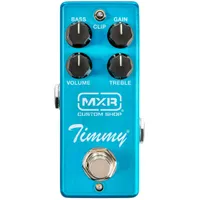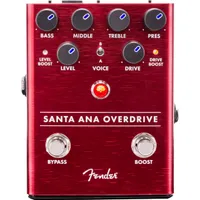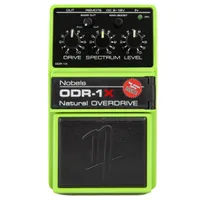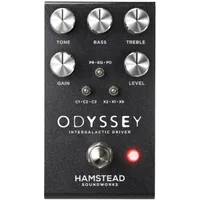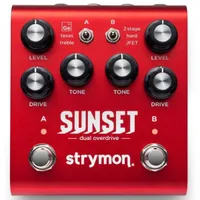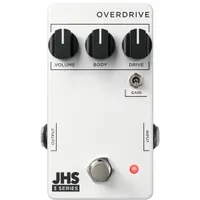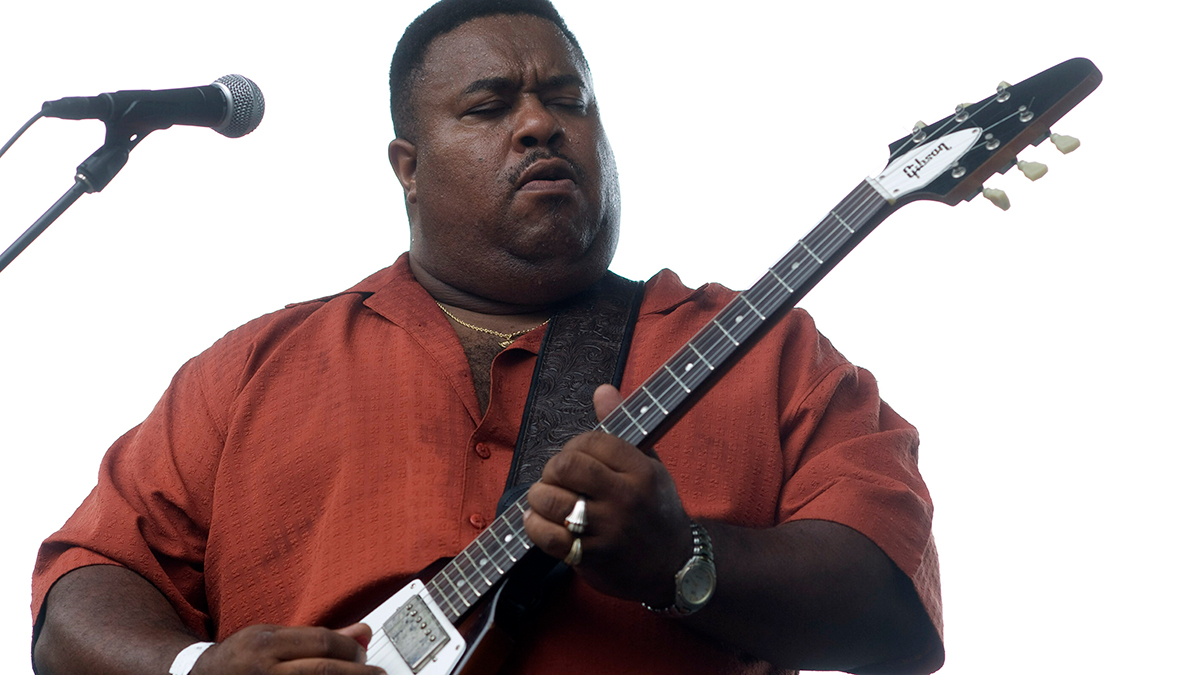Best overdrive pedals 2025: from mid-hump to transparent tone
My pick of the top-rated overdrive pedals will get your gain tones on point
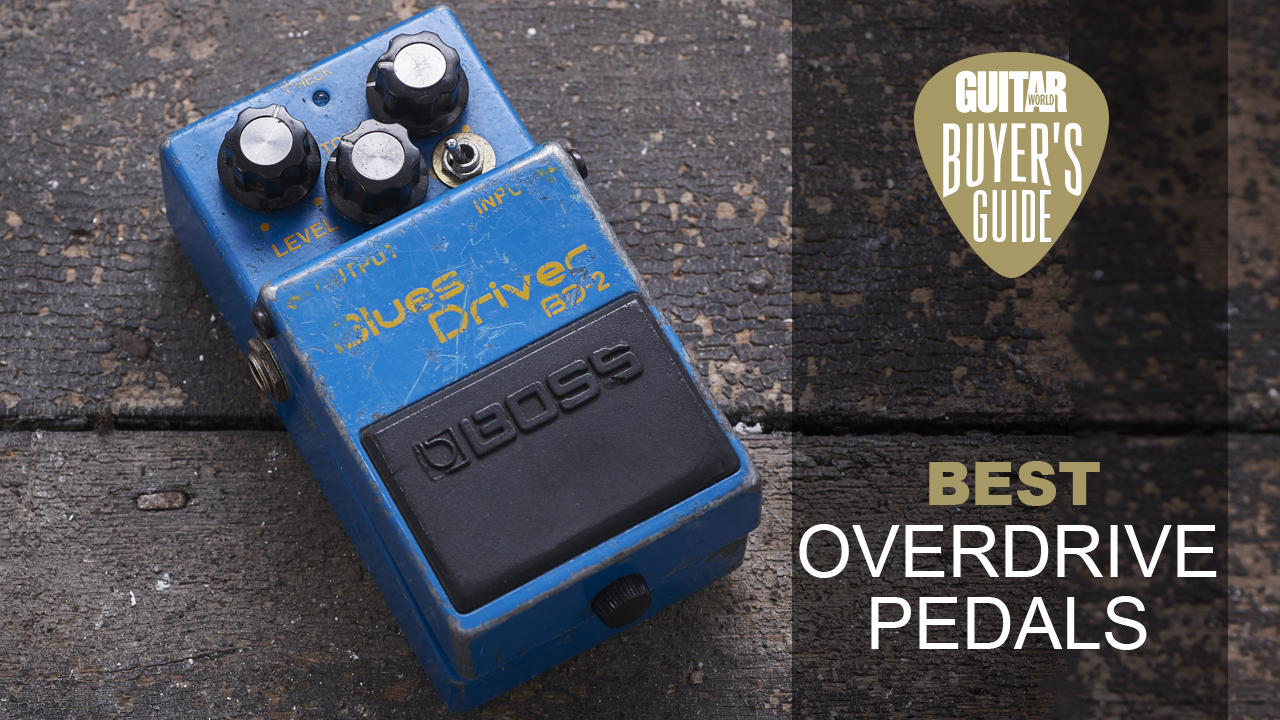
With so many options for guitarists these days, picking the best overdrive pedal is a truly tricky one. Do you go for the classic mid-hump circuit? Or maybe a transparent overdrive is best for your rig? If you’re struggling to decide what’s best for your ‘board, you’re in the right place.
I’ve been playing guitar for well over twenty years now, and I’ve had more overdrive pedals on pedalboards than I’d care to remember. I’ve tried them all, from the classic Tube Screamer circuit to Marshall amp-in-a-box type pedals, and everything in between. In this guide you’ll find my handpicked selection of the most popular overdrive circuits, but it’s always key to remember that the sound of your pedal will be hugely determined by the pickup type and guitar amplifier that you use.
For those who don’t care too much about clipping types or transparency and just want a great-sounding all-rounder, have a look at the Boss BD-2 Blues Driver. Despite the name it’s actually an incredibly versatile drive pedal that can cover pretty much anything, blues included. Those looking for a simple and cheap overdrive pedal should go check out the Boss SD-1 SuperOverdrive, which has sold millions since its release in 1981. Priced at well below $100 it’s an absolute steal for such a legendary guitar pedal.
If you’re new to guitar pedals and want to know how to decide which one you should buy, have a look at my how to choose section which will take you through everything you need to know. I’ve also curated an FAQ which should enhance your knowledge by answering common questions, and I’ve got a glossary of key terms further down this guide to help you know your MOSFET from your op-amps.
My top picks
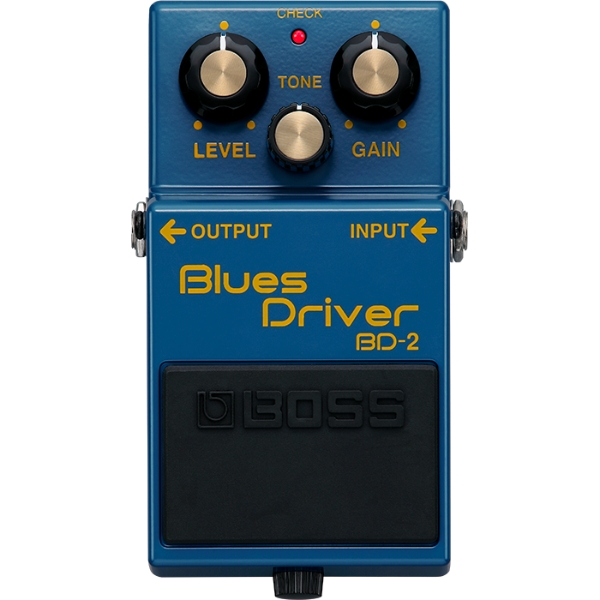
For the guitarist seeking an all-rounder overdrive pedal, look no further than the Boss BD-2 Blues Driver. I’ve seen this pedal on countless pro pedalboards, and despite the name it’s not just good for blues either, being super versatile and simple to dial in.
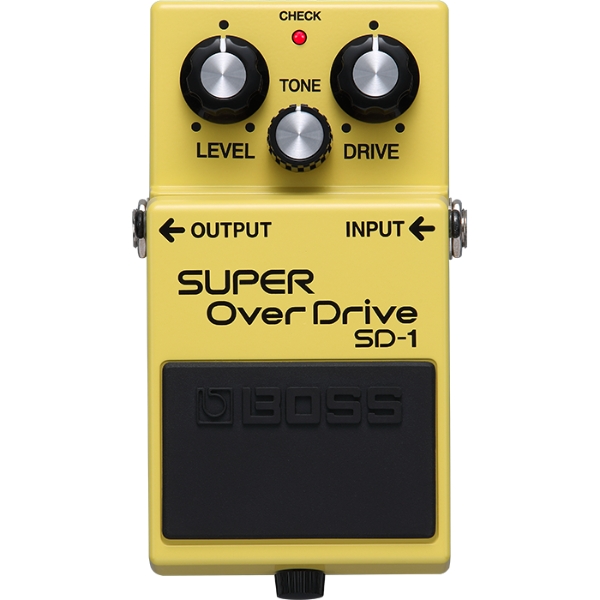
One of the original and most legendary overdrive pedals ever made, the Boss SD-1 Super Overdrive may have iconic status, but the price point that’s well below $100 makes it accessible for every kind of guitarist.
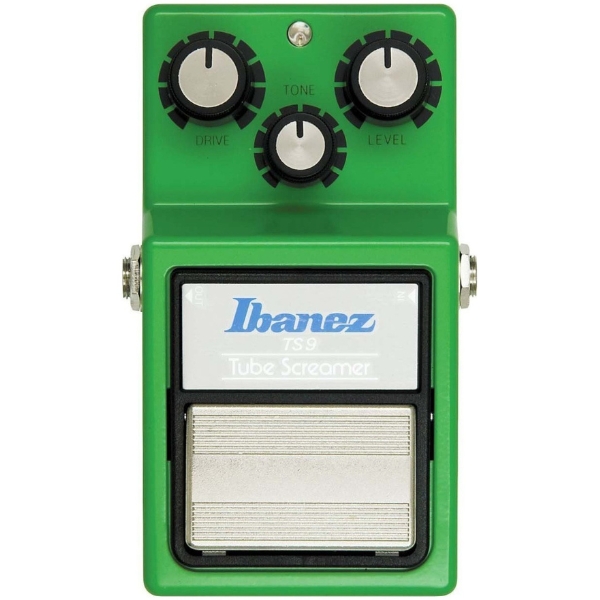
If you want the famous mid-hump of a Tube Screamer, no one does it better than the original, and still the best, Ibanez TS9 Tube Screamer pedal. Perfect for pushing a tube amp into glorious saturation, it’s a brilliant pedal and great value for money too.
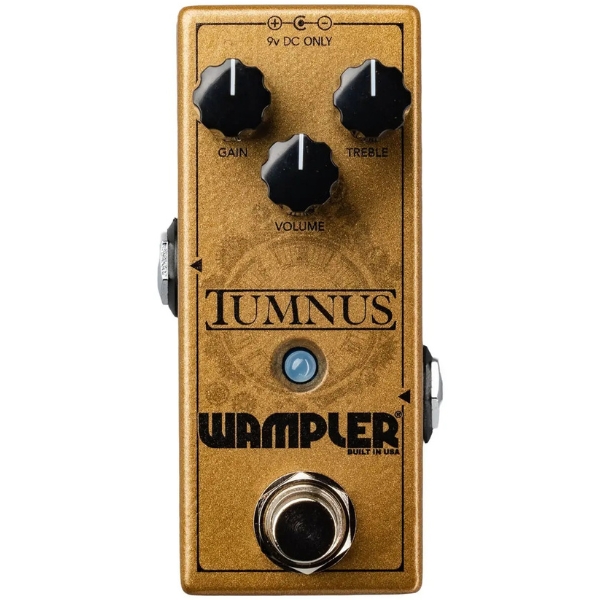
Klon circuits are loved for their transparent overdrive, and while an original Klon will set you back four figures, the Wampler Tumnus delivers the same sound for a lot less cash. It works great as a boost or standalone drive, and it’s nice and compact.
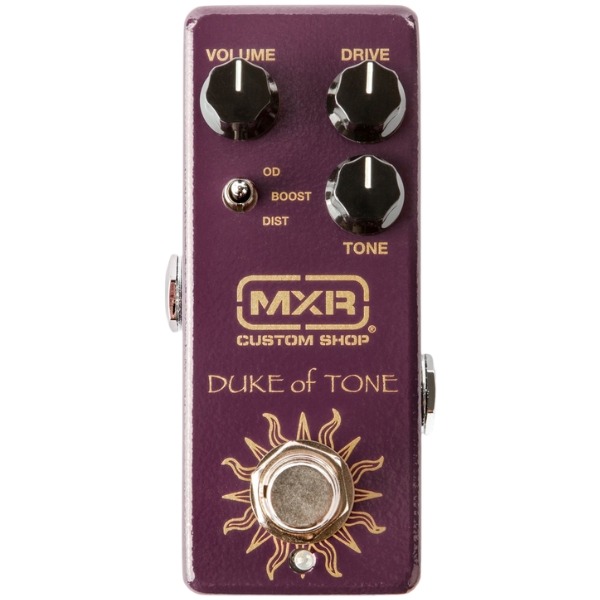
Based on a pedal that has a waitlist of six and a half years at the time of writing, the MXR Duke of Tone gives you some of the most hallowed overdrive tones on the market right now, and for considerably less.
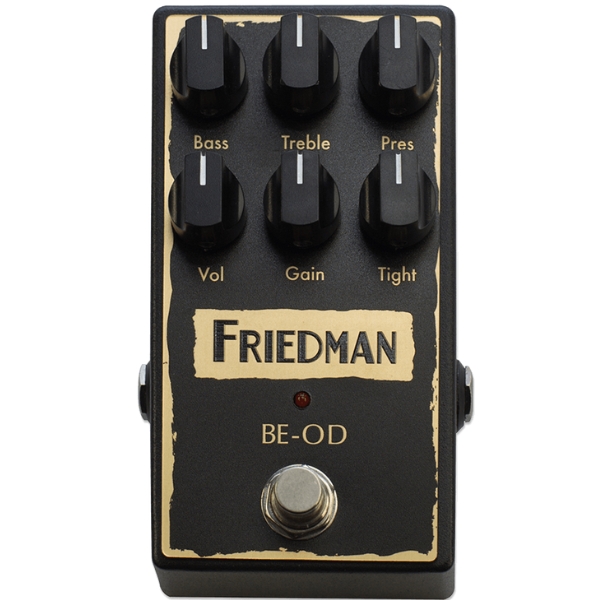
Amp-style overdrive pedals are really popular nowadays, and Marshall Plexi emulations are ten-a-penny. If you want the ultimate amp-in-a-box, go for the Friedman BE-OD. It’s not the cheapest overdrive pedal by any means, but the sounds on this thing are nothing short of stellar.
Best overall
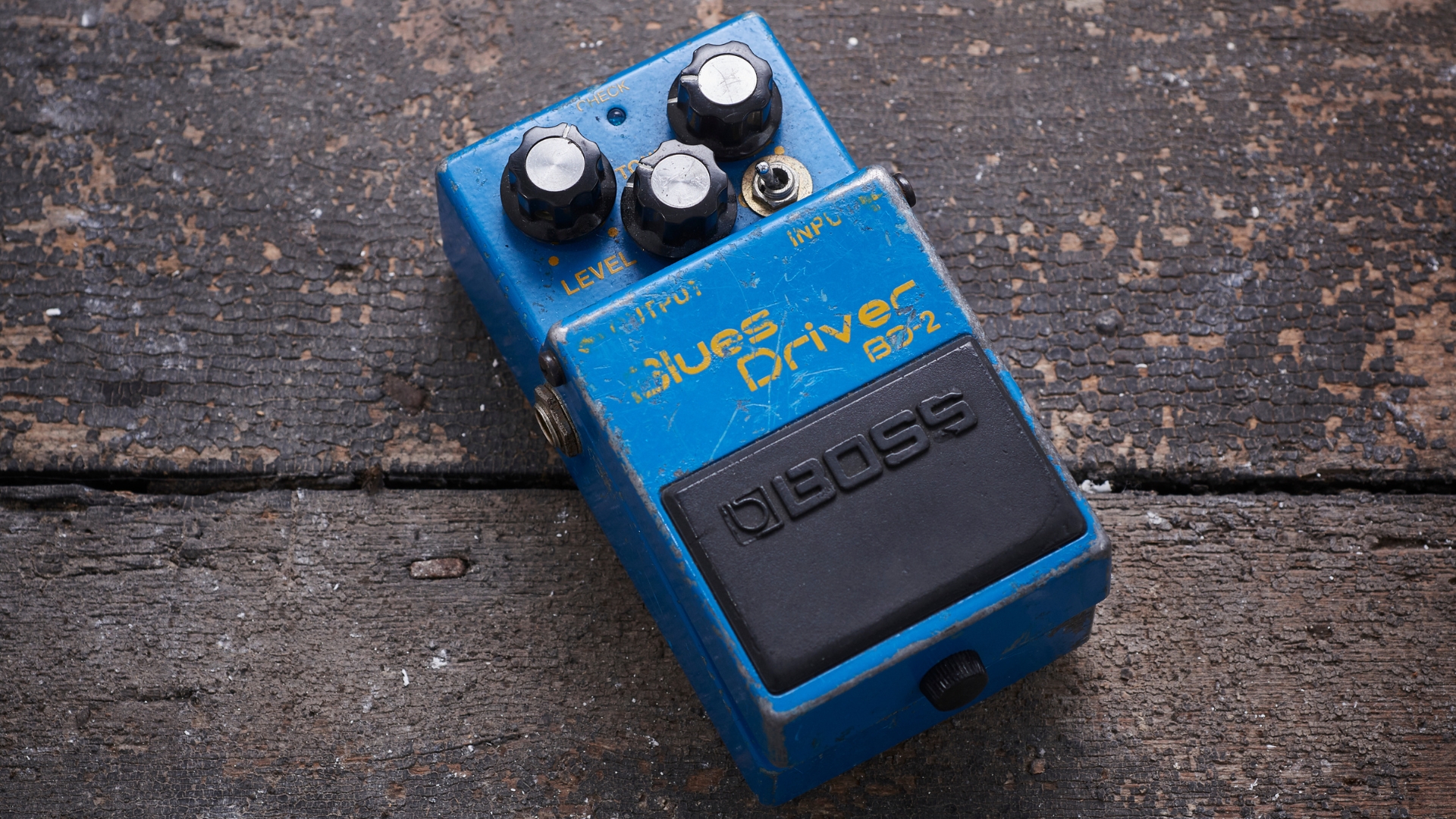
1. Boss BD-2 Blues Driver
Our expert review:
Specifications
Reasons to buy
Reasons to avoid
Overview: You’ll find the Boss BD-2 on a huge range of pedalboards, and not just blues players like its name suggests. Rather than aiming to push a tube amp like the Tube Screamer and its many clones, the aim with the BD-2 design was for it to sound like a driven tube amp itself, achieved with a complex design and tone stack similar to that of a Fender combo.
Build quality: There’s not really all that much to say about Boss build quality, but if you’re new to guitar pedals, then you can rest assured that you stand little chance of breaking this. I imagine there’s plenty of OG models from 1995 still knocking around, with the classic Boss stompbox layout proving to be an enduring one indeed.
Usability: Like most gain pedals, the BD-2 features level, tone, and gain controls for dialing in your sounds. The gain gives you a wide range of driven tones, but the treble control does have the habit of sounding harsh at higher settings. You can easily tame this just by knocking it back a bit though.
Sounds: If you want to push your amp there’s plenty of grunt in the level control, but the best thing about it is that it really does give you that amp-style feel. You can get a lot of different sounds out of it just by manipulating your pick attack and your volume control, making it great for players who like to use dynamics in their tones.
Best budget
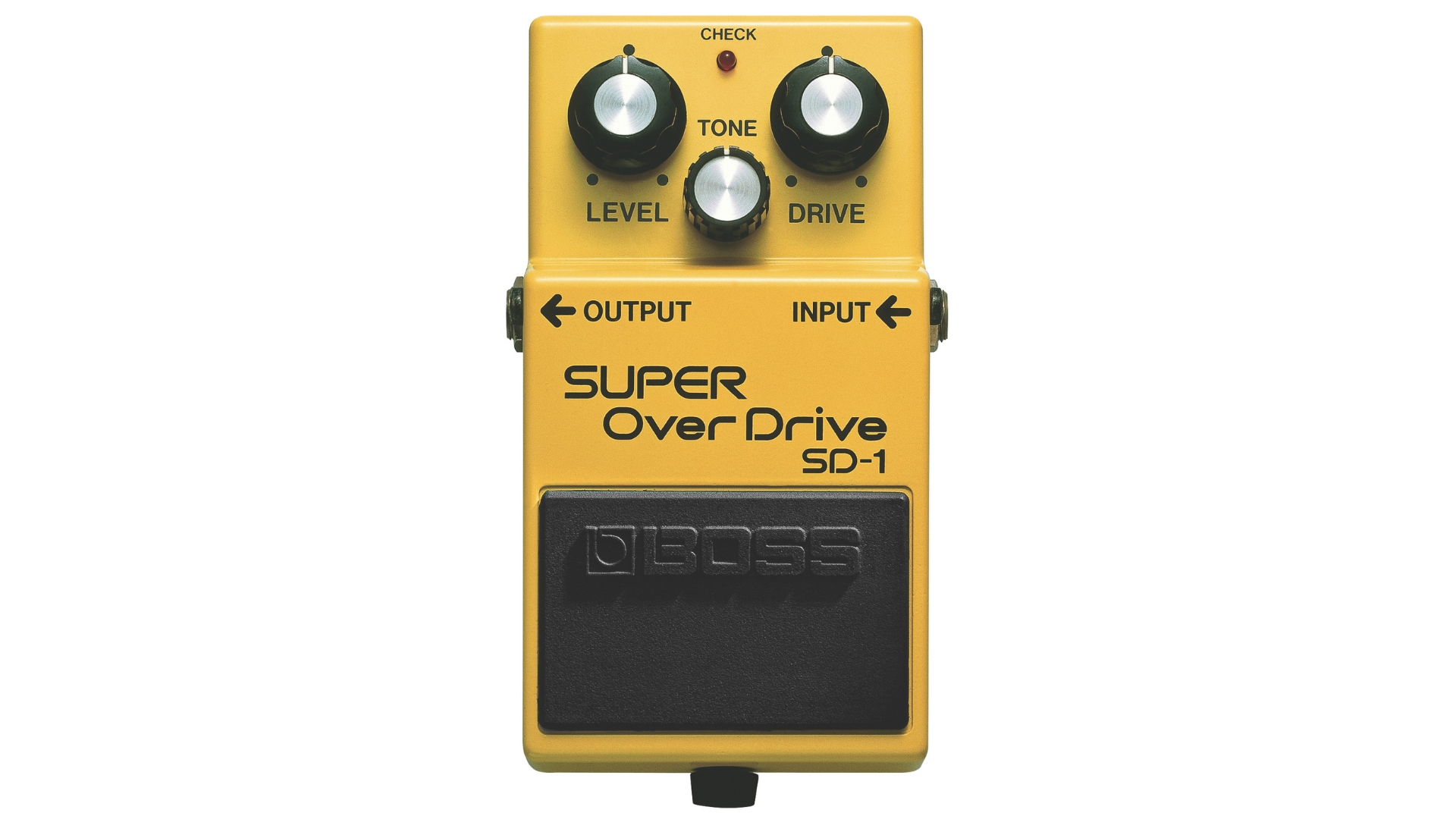
2. Boss SD-1 Super Overdrive
Our expert review:
Specifications
Reasons to buy
Reasons to avoid
Overview: The Boss SD-1 SuperOverdrive launched in the 80s and has become a staple for guitar players ever since. Although its tone profile is similar to the Tube Screamer circuit, the SD-1 uses asymmetric soft clipping to generate its sound, which is part of the reason it continues to stand out even today.
The list of SD-1 users is like a who’s who of rock guitar history, including players such as Steve Vai, Josh Homme, Zakk Wylde, Kirk Hammett, Robert Smith, Mark Knopfler, Prince, The Edge, and a myriad more. For such a cheap and easily available pedal, its user base really speaks volumes about its tone.
Build quality: The quality of Boss’ stompboxes is legendary and part of what makes them some of the most used pedals by touring guitarists. You could turn this on by jumping from a full stack without breaking it, and the large footswitch means that it’s easy to hit whether you’re playing on a dark stage or in your socks at home.
Usability: Three knobs control the level, tone, and drive. With these, you can craft a great variety of sounds, although I did find that the tone knob is more of a mid-range fine-tuner than the type that offers a massive sweep of EQ. It’s an incredibly easy-to-use pedal though, and coupled with the low price, perfect for those looking for a beginner overdrive pedal.
Sounds: The soft, asymmetric clipping of the SD-1 is closer to what a tube amp does, giving it a smooth and harmonically rich overdrive sound. When cranking up a clean amp, it delivers some brilliant tones for rock players, but a classic use of this pedal is to place it in front of an already driven Marshall JCM800, which gives you a searing tone better suited to harder styles.
Best Tube Screamer
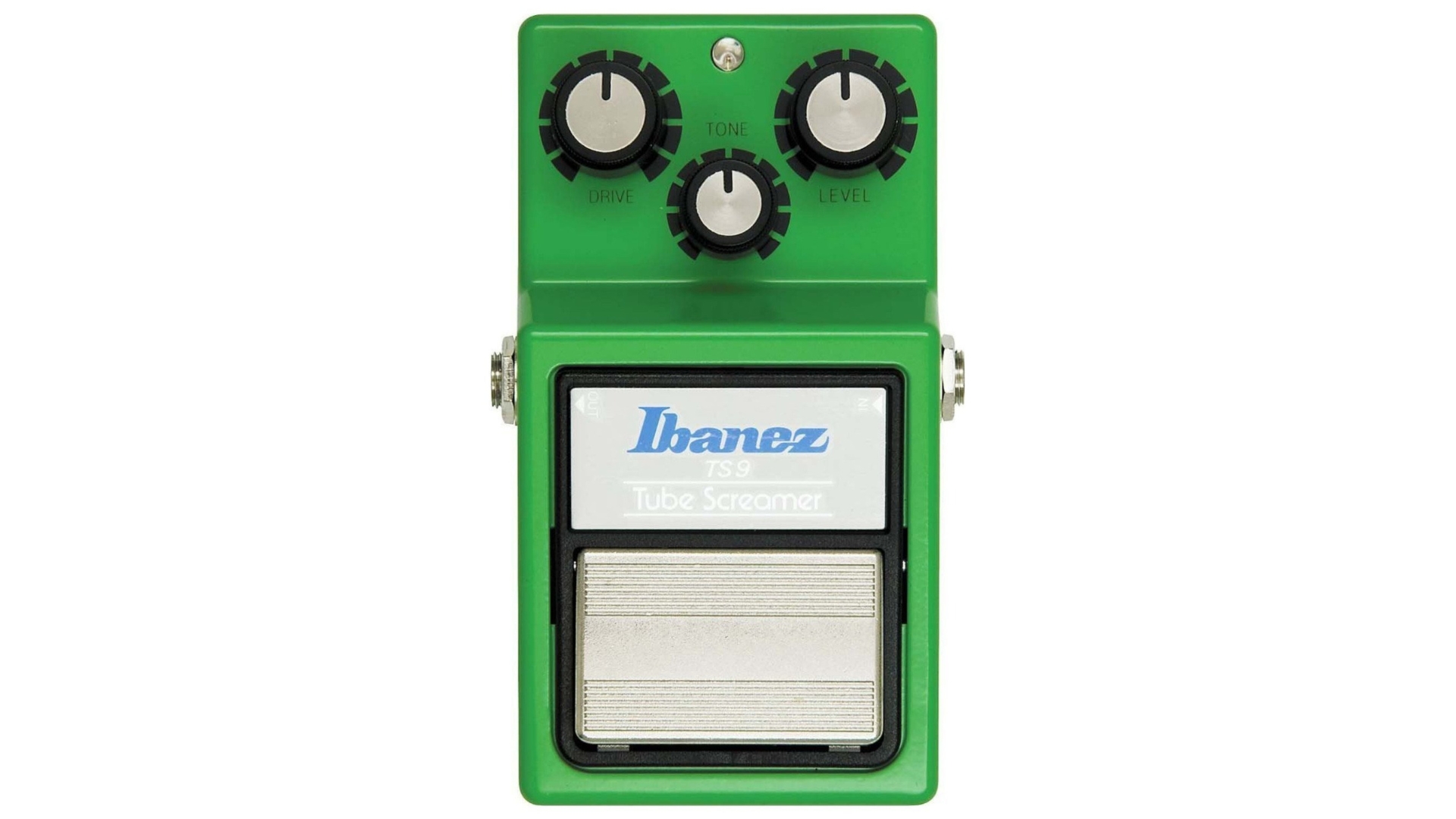
3. Ibanez TS9 Tube Screamer
Our expert review:
Specifications
Reasons to buy
Reasons to avoid
Overview: Another legend in the world of overdrive circuits, the Ibanez TS9 Tube Screamer is arguably one of the most popular drive pedals ever made. The original Tube Screamer circuit was created by Maxon engineer Susumu Tamura in 1979, and ever since then, it’s been a great way for guitarists to get drive tones that cut through the mix.
Build quality: The TS9 chassis is very durable, sharing a lot of characteristics with the classic Boss compact stompbox format. The switch is smaller despite the similarity in design, and the TS9 is ever so slightly smaller than the SD-1.
Usability: As the originator of so many copies, the trio of knobs will feel familiar to anyone who’s used an overdrive pedal before, giving you controls for drive, tone, and level. The tone knob controls the level of treble signal you hear in the pedal’s tone, with the clockwise position giving you the brightest sound.
Sounds: The classic description of the Tube Screamer circuit is that it’s very mid-forward. This makes it great to use as a pedal for leads to cut through the mix, or just stand out in a live sound scenario. Cranking the volume can get you loads of saturation out of a tube amp, whereas adding overdrive and knocking back the volume is perfect for blues. It’s an incredibly versatile sound, and it plays nicely with other gain stages too.
Best Klon
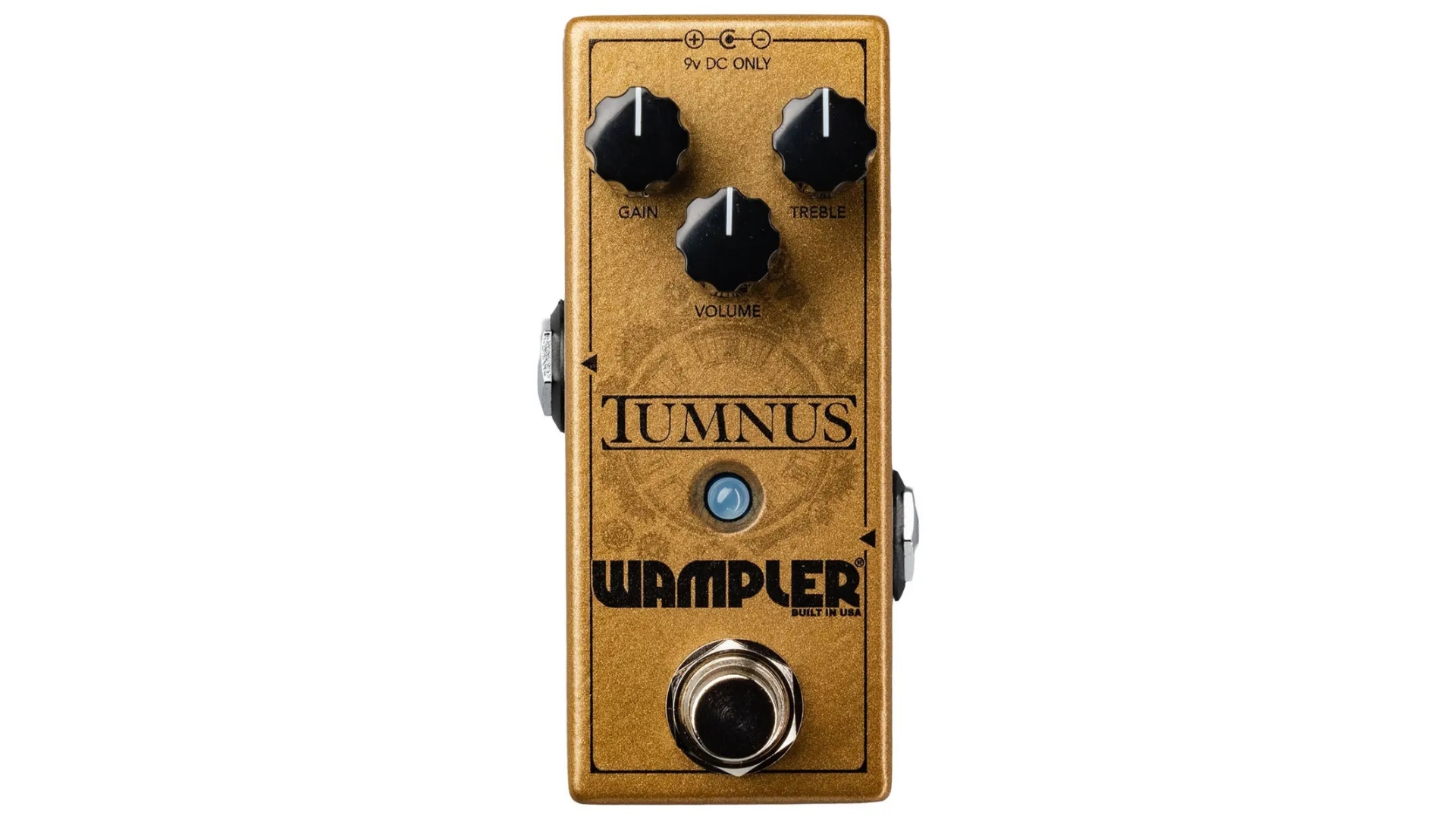
4. Wampler Tumnus
Our expert review:
Reasons to buy
Reasons to avoid
Overview: The original Klon is another pedal that’s achieved mystical status in the world of guitar, thanks to its transparent overdrive sound that’s great as a boost or for low to mid-gain drive sounds. Despite being yet another Klon-clone, the Wampler Tumnus is my favorite because it takes the wonderful sounds and puts them in a compact pedal that’s easy to squeeze onto a busy ‘board.
Build quality: Wampler pedals are built though, and this one is no different. The chassis feels very robust, and I like the slightly worn gold finish that gives it a bit of a vintage vibe when sat next to other pedals on your ‘board.
Usability: It won’t be a surprise the find there are three controls of this pedal, which cover gain, level, and treble. It’s certainly more user-friendly that it’s labeled treble though, versus the rather more ambiguous ‘tone’ moniker that features on many of the drive pedals on this list.
Sounds: The Tumnus delivers the classic Klon sound in spades, providing a lovely touch response with some subtle compression. It’s rich, midrangey overdrive sounds fantastic whether played through single coils or humbuckers, and used as a boost you can coax some fantastic sustain out of it.
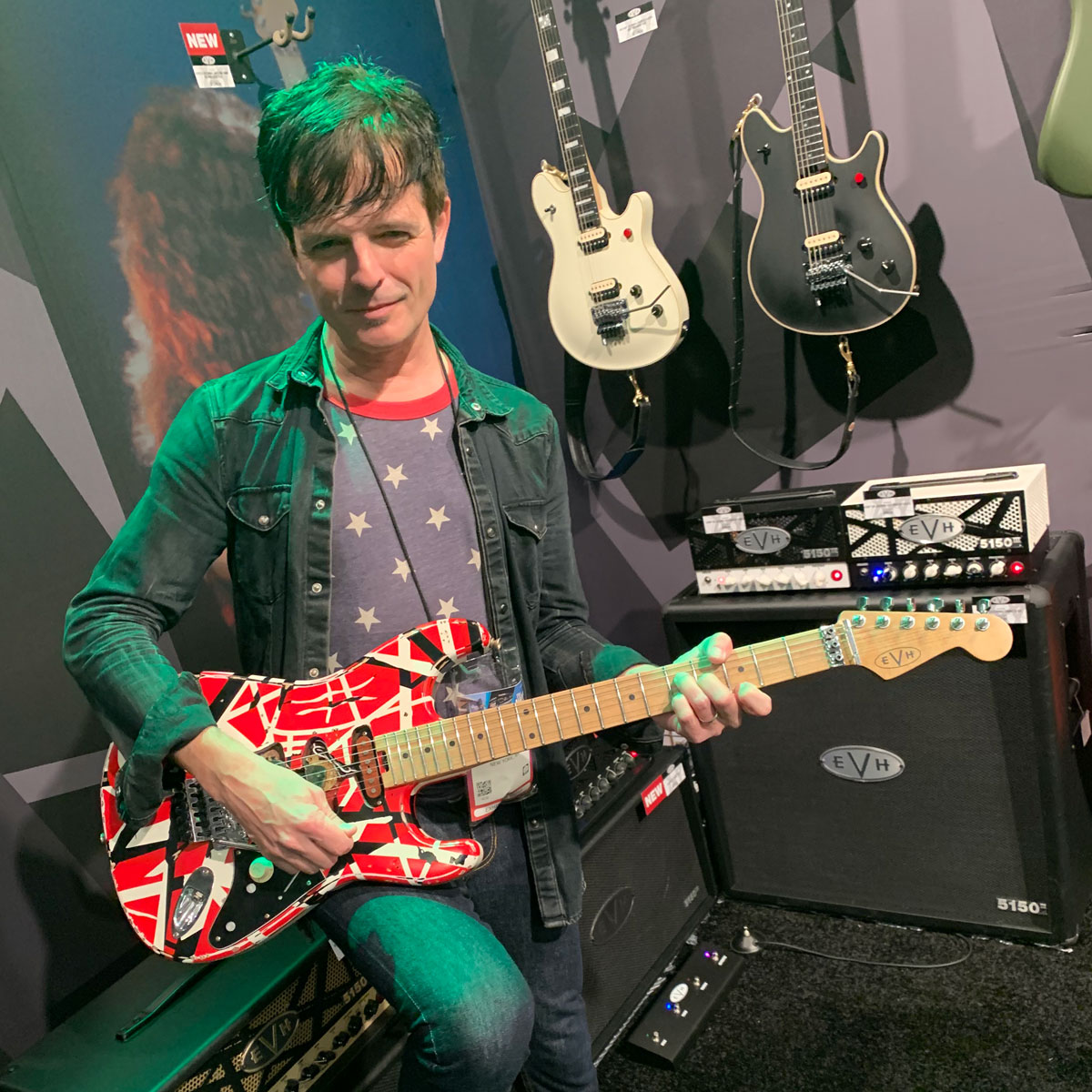
“Original Klon Centaurs are rare and expensive, and having played a few of them as well as some very good clones, I can attest that the Wampler Tumnus sounds very convincing to my ears. Obviously, there’s no high-gain to be found here, but discriminating players who favor a sweeter low-to-medium gain overdrive and transparent boost, then the Tumnus may be one of the very best.”
Read more: Wampler Tumnus review
Best Bluesbreaker
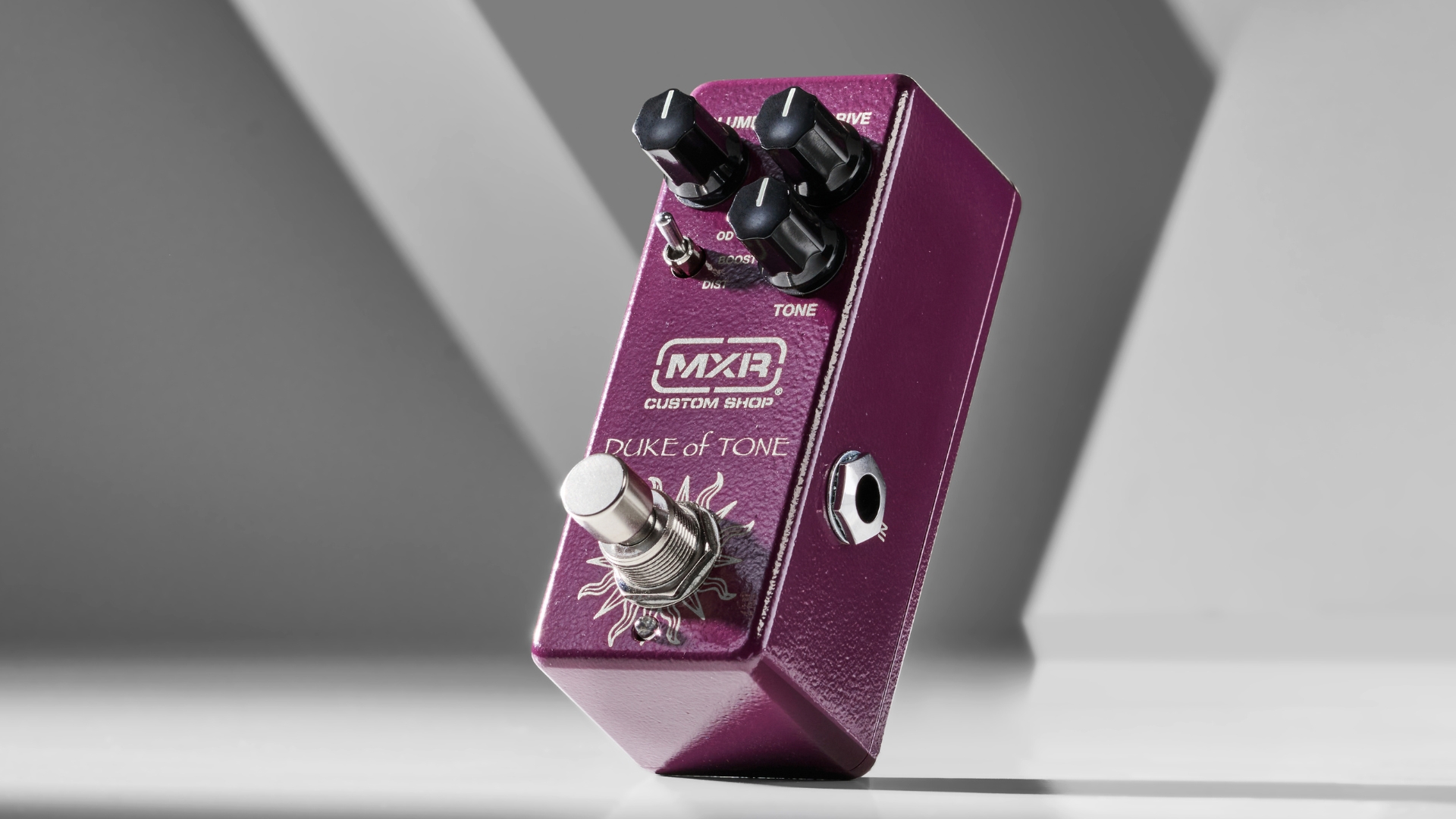
Specifications
Reasons to buy
Reasons to avoid
Overview: The Analogman King of Tone pedal is incredibly rare due to being handmade, but everyone agrees that it sounds amazing. The problem is, unless you’re willing to wait six and a half years for a pedal - which is the current waiting time for one at the time of writing - there’s just no other way of getting one at a reasonable price.
Enter the MXR Duke of Tone, created in conjunction with the King’s creator Mike Piera to get us less patient players the same sound delivered in the same decade, and for a lot less money.
Build quality: The compact form factor of the Duke of Tone means it will easily fit on a pedalboard, great if you’re stacking overdrives. All of the circuitry was created with Mike Piera’s involvement too, so he tested every single component and gave it the go-ahead before the pedal was produced. This means you’re getting as close as possible to the King of Tone without the massive outlay.
Usability: Like a lot of drive pedals, its features are the holy trinity of volume, tone, and gain knobs which makes it really simple to use. Three different modes give you the option to use it as a boost, an overdrive, or a distortion pedal, which gives you a lot of variety if you like to chop and change tones, or you’re looking for something to fill a particular gap.
Sounds: Honestly it sounds so close to the real deal it’s scary. The overdrive sound is thick and smooth but it never obscures your amp tone, and the touch sensitivity is really phenomenal delivering a smooth tone that lets your pickups and amp breathe. You can use it to push a clean amp further, get low to mid-gain drive tones, and get compressed, hard-clipping sounds with the distortion mode.

“The big question for many will be whether it sounds identical to a single King Of Tone channel, and from A/B tests with our own pedal we can say that, although it took slightly different knob positioning, we were able to match the two pedals up to a point where any perceived disparities were so subtle as to make no difference when playing. In short, it can do the job.”
Read more: MXR Duke of Tone review
Best amp-in-a-box
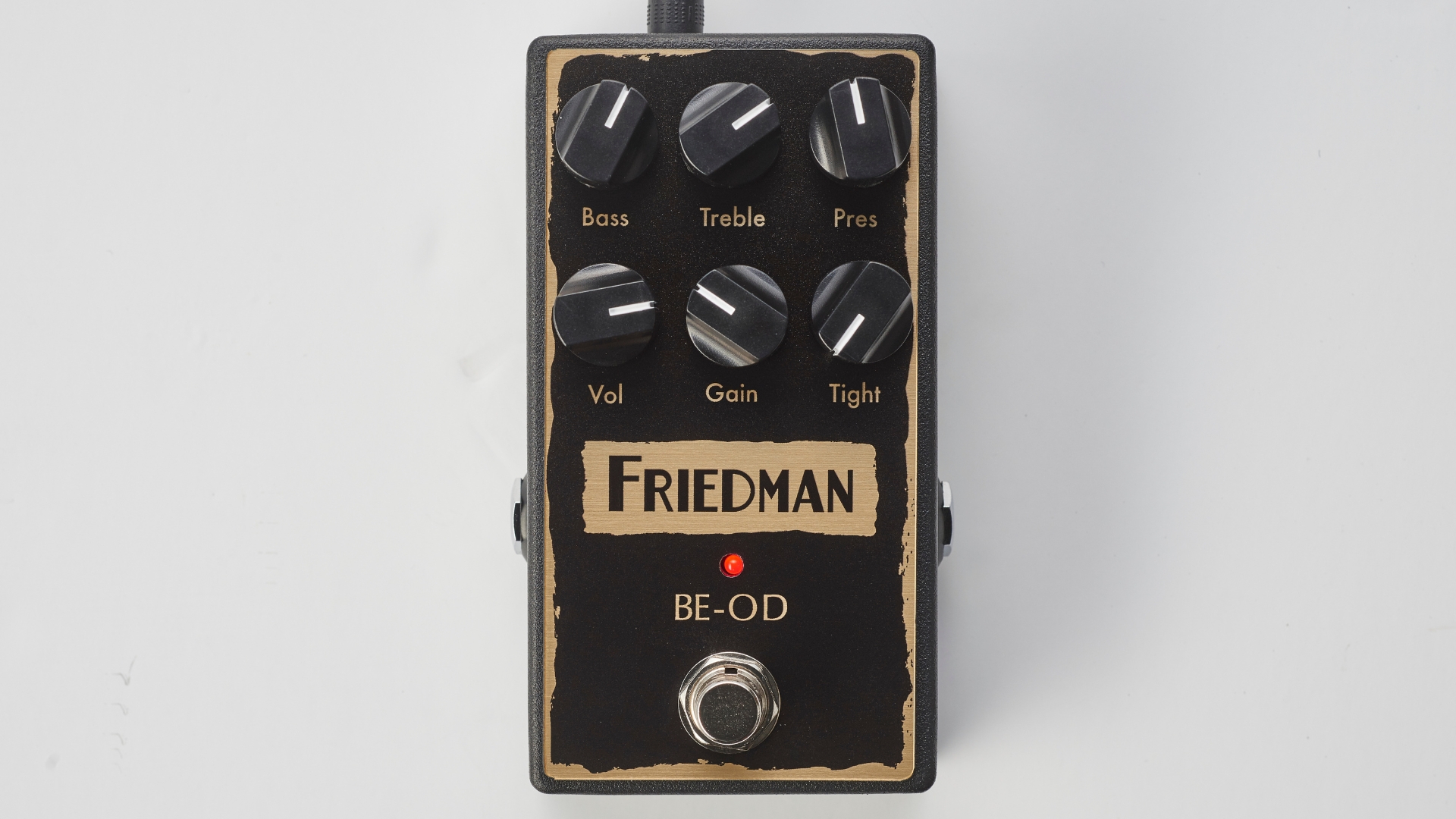
6. Friedman BE-OD
Our expert review:
Specifications
Reasons to buy
Reasons to avoid
Overview: Amp-in-a-box pedals are really popular nowadays, and for the uninitiated, the idea is that you run one of these into a clean amp to change the tonal characteristics. The Marshall Plexi sound is one of the most sought-after tones in the world, and for me, the Friedman BE-OD absolutely nails that holy grail of guitar tone.
Build quality: The BE-OD is very solidly built, its black and gold chassis making it clear what kind of amp it’s emulating. It’s a very lightweight pedal which will be a relief to those who have packed pedalboards, but that doesn’t give me any qualms about it’s durability.
Usability: Unlike most of the other drive pedals on this list, the BE-OD features a full six knobs, which gives you some extra flexibility in tone shaping. As well as a full three-band EQ you’ve also got a ‘tight’ control, which adds more compression the further clockwise you turn it.
Sounds: This pedal is as close as you can get to a hot-rodded Marshall Plexi without forking out a significant amount of cash and lugging a heavy amp around with you. Even at the lowest setting the gain knob delivers a very saturated sound - transparent overdrive is not this pedal’s forte. For those who want to let rip with searing overdrive sounds however, it’s a brilliant choice.
Also consider
For me, the pedals above should have most players covered. That said, overdrives are a very personal thing, and mixing and matching gain stages is really useful for guitar players. If you didn't find what you were looking for above, or you want something else to go with a pedal you already have, here are some more great options.
MXR Timmy
TS-type | True bypass
The Timmy is the classic 'transparent' overdrive. Based on the Tube Screamer, but without the same compression and without its trademark 'mid-hump' EQ profile. We'd say the Timmy is much more versatile as a drive.
★★★★½
Read more: MXR Timmy review
Fender Santa Ana Overdrive
FET-type | True bypass
The Santa Ana produces fat lead tones as well as distinctive hard rock rhythm crunch, and the switchable boost function is great for punching a solo above the mix (level setting) or adding extra creamy compression and sustain (gain setting).
★★★★½
Read more: Fender Santa Ana Overdrive review
Nobels ODR-1X
TS-type | Switchable bypass
It looks like a Tube Screamer, but the Nobels ODR-1X does it’s own thing. Less of a mid-range hump type circuit than its doppelganger, the ODR-1X is more of a full-range overdrive, making it far more versatile than your average TS-clone. In similar fashion to Klon-type pedals, the ODR-1X is very transparent, making it a great pedal for adding overdrive without overtly coloring your tone.
★★★★½
Read more: Nobels ODR-1X review
Hamstead Soundworks Odyssey
Amp-in-a-box | Buffered bypass
The brainchild of Peter Hamstead, the Odyssey - like the Tight Rock - is a drive built by an audio engineer who's primarily an amp designer. And like the Tight Rock, it feels more like an 'amp in a box' design than the lower-gain overdrive options out there.
★★★★½
Read more: Hamstead Soundworks Odyssey review
Strymon Sunset
Digital-type | Buffered bypass
The Sunset is an oddity in this list. It has two independent drives with independent controls, easily accessible via the front panel. The left-hand side sports a germanium diode-based drive, which is similar to some models of the OCD; a Tube Screamer-style drive and a treble boost, while the right side has a more complex two-stage drive, a hard-clipping distortion that's somewhat akin to a ProCo RAT, and the analog JFET boost.
★★★★½
JHS 3 Series Overdrive
TS-style | True bypass
The 3 Series from JHS offer players high-quality, no-frills effects pedals at a great price. This particular offering is certainly one of the best overdrive pedals around, especially when you consider the fact that it comes in at under $/£100. It’s really versatile and offers you everything from a subtle clean boost, to transparent overdrive, through to compressed, crunchy, pushed tube amp-like tones.
★★★★☆
How to choose
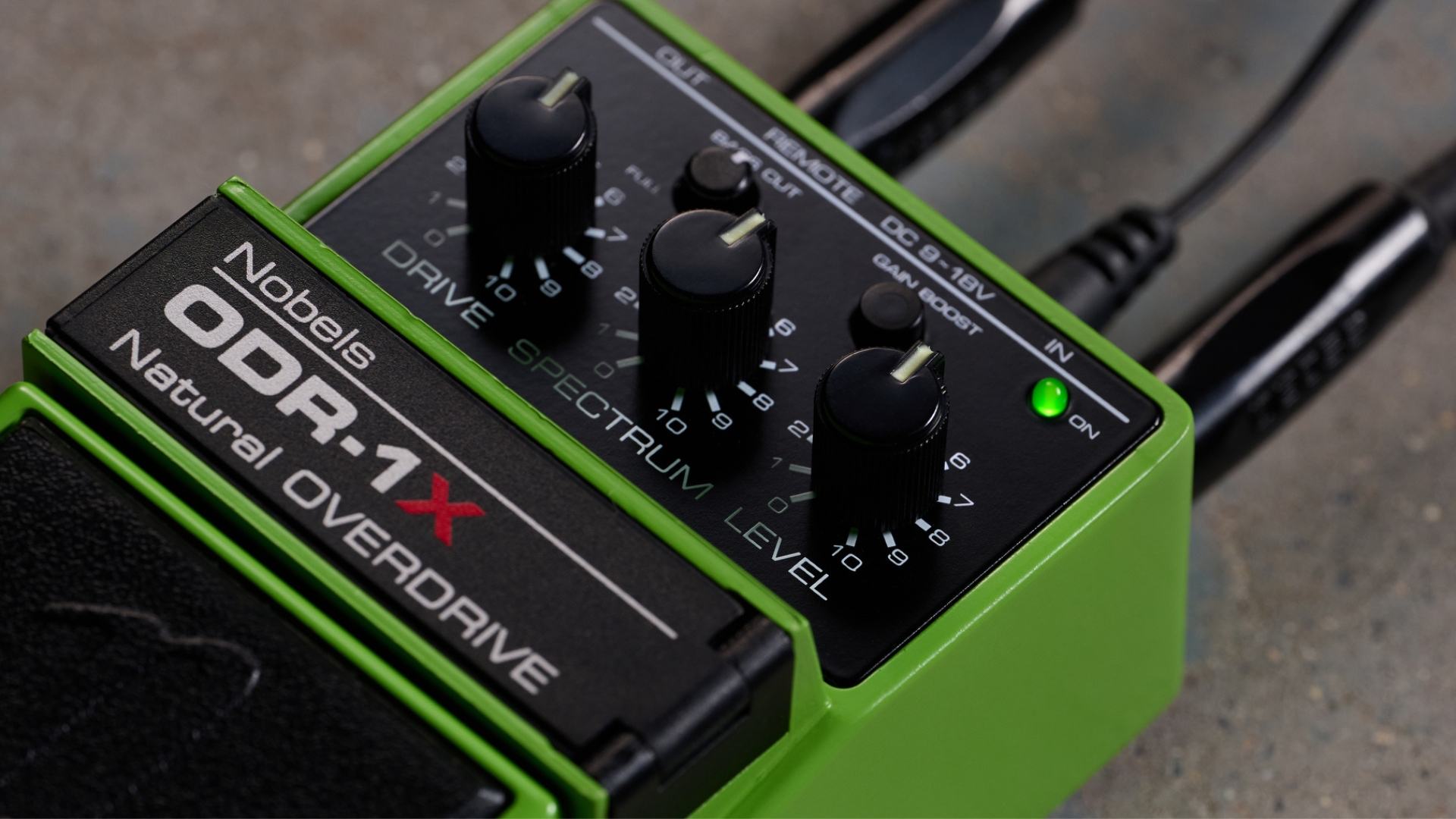
Choosing your first overdrive pedal can be a really tough one, and not just because there are so many to choose from. Lucky for you, I’ve been buying, selling, and using drive pedals for over twenty years now, so I can take you through exactly what you should know, and what to look for before you make a decision.
1. Consider your guitar and amp
You can trust Guitar World
An overdrive pedal’s sound will be massively influenced by the type of pickups you’re using, and the guitar amp you’re playing it through. Single coil pickups for example will be brighter, whereas a humbucker-equipped guitar will deliver thicker, more mid-rangey tones.
Similarly a tube amp will give you a more dynamic sound when paired with an overdrive pedal, with enhanced touch sensitivity versus a solid state or modeling guitar amp. Overdrives tend to be more forgiving with tube amps, so choose a pedal you feel will suit your particular amp’s characteristics.
2. Think about how you want to use it
Thinking about how you want to use your overdrive pedal is the next step. Do you want to push a clean amp into overdrive? Then you should look at drive pedals with good boost characteristics. Or maybe you have an already driven amp you want to push into higher saturation, in which case seek something with a good gain range.
You might also want to pair your overdrive pedal with another one and stack them to achieve a heavier tone, or use them to give you a base rhythm tone, which can then be sent into lead territory. It’s important to think about how you’re going to use your overdrive pedal when you get it, as this can really inform which one you should buy.
3. Choose the right tone profile
While there are plenty of overdrive pedals out there, they tend to fall into a few categories when it comes to tone profile.
Transparent: These are typically Klon-clones or Bluesbreaker circuits, which are pedals designed to let your pickups and guitar amp shine by adding gain, but without drastically altering the tonal profile.
Mid-hump: Usually based on the Tube Screamer circuit, mid hump pedals are great for cutting through a band mix. Lots of players use them to enhance solos or get their amp to cut through better when playing with a band.
Amp-in-a-box: These types of pedals get their characteristics from famous amplifiers, and generally try to simulate that particular amplifier rather than shaping the tone of an existing amp.
4. Check the practicalities
There are a few other things you can look at beyond just the sound of an overdrive pedal, the first of which is the bypass. The bypass determines whether or not a pedal affects your tone when it’s switched off. A buffered bypass provides a boost, which alters your tone when the pedal is off, whereas a true bypass pedal won’t color your tone when you switch it off.
While most overdrive pedals have a simple three-control layout, some have more controls. It’s up to you to decide whether or not you prefer simplicity versus something more in-depth though. Simple controls make it easier to dial in sounds but limit you, whereas more complex controls give you more room to maneuver, at the cost of taking more time to dial in.
Finally, you should think about the size of the pedal you’re buying if you use a pedalboard. Some pedals can be deceptively large, and there’s nothing worse than finding out a pedal you just bought doesn’t fit into your setup or hangs off the edge of your ‘board. So before you buy, make sure it will actually slot nicely onto your pedalboard
FAQs
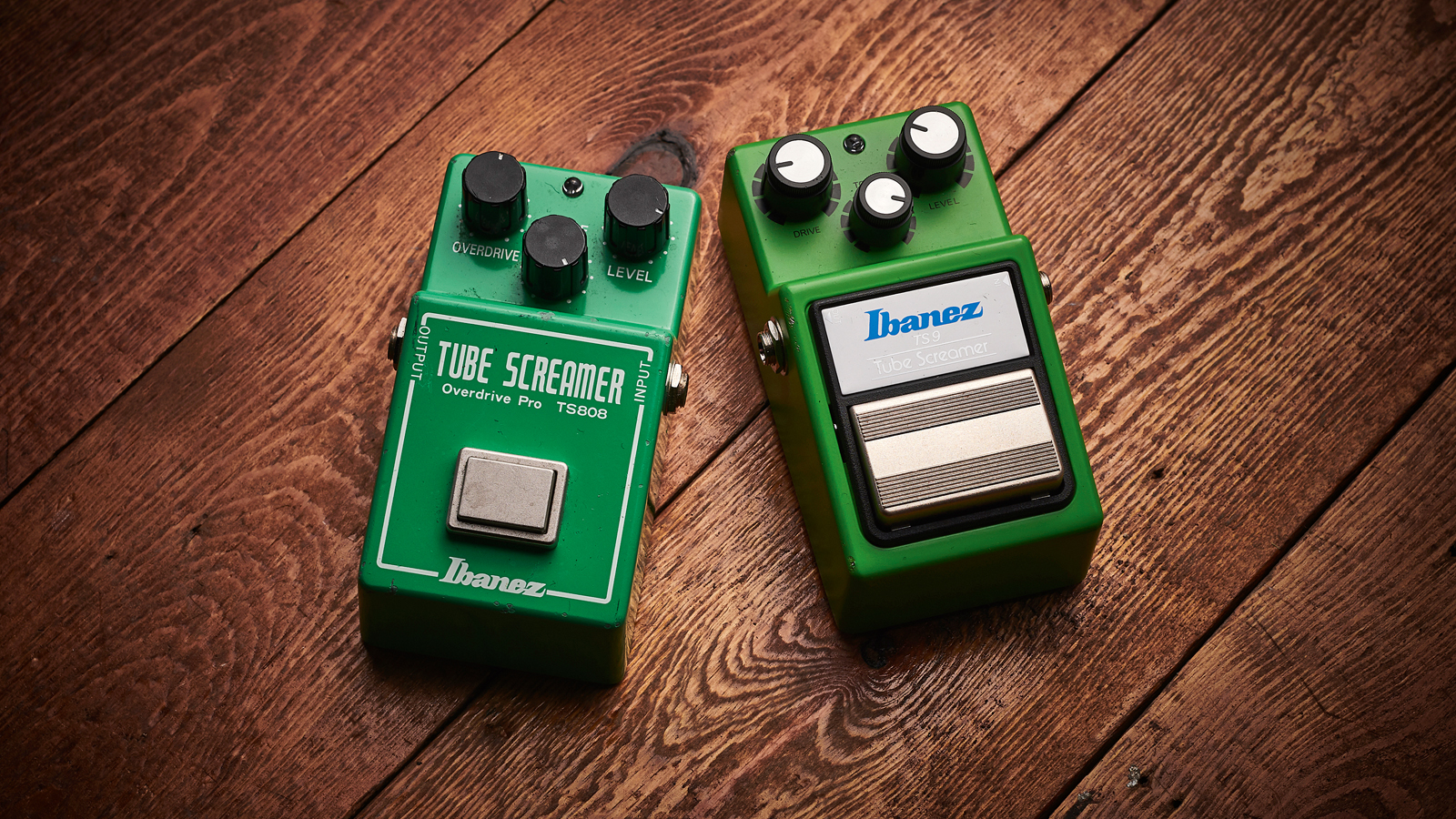
What’s the difference between overdrive, distortion, and fuzz?
When it comes to pedals, overdrive offers the least saturation when compared to distortion and fuzz. Overdrive is designed to offer a similar sound to the breakup of a tube amp, whereas distortion is a harder sound with a more aggressive type of clipping. Fuzz meanwhile, is a very hard type of clipping that delivers the trademark buzz.
What is a transparent overdrive pedal?
A transparent overdrive pedal gives you a more driven sound, but doesn’t affect the characteristics of your guitar amp. Transparent drives don’t add much in the way of EQ, preserving the natural sound of your amp, but they give you volume and gain to juice up your original tone.
What does ‘mid-hump’ mean?
Mid-hump refers to a pedal that boosts the mids, which results in a tone that cuts through better. Mid-hump pedals are really useful for live players as they let you be heard when your tone is fighting with other guitars, bass, vocals, and drums.
What’s the difference between soft clipping and hard clipping?
Soft clipping pedals are designed to give you a more amp-like tone that’s smooth, and give you good playing dynamics. Hard clipping on the other hand gives a more aggressive sound that’s tighter.
What’s the difference between symmetrical and asymmetrical clipping?
Symmetrical and asymmetrical clipping refers to the way an overdrive pedal clips the positive or negative portion of the waveform. Symmetrical clipping does this evenly, while asymmetrical clipping does it an odd number of times, which affects the way the pedal sounds.
Do overdrive pedals work differently with different pickups?
Yes they will. It’s a very interdependent relationship between your pickups, pedals, and your guitar amp. Add in other pedals and you can really start to muddy the waters. Experimentation is key here, as it’s hard to know exactly how a pedal will sound with your particular setup until you try it.
Where should I put my overdrive pedal in the signal chain?
Again it’s key to experiment here, but most players tend to put their overdrive pedals early on in the signal chain, before the delay and reverb tones. Placing overdrives before higher gain pedals is also a common tactic, so if you want to stack drives put the lower gain ones earlier on.
Do I need true bypass or buffered bypass?
This shouldn’t make too much of a difference to your tone, but buffered bypass pedals can help preserve clarity when you have long cable runs or lots of pedals on your pedalboard. There’s no right answer here, it all depends on your particular setup and what you hope to get from it.
Can I use an overdrive pedal as a boost?
Yes you can. It’s pretty common to use a transparent style overdrive pedal as a boost by leaving the gain at the minimum setting and cranking the volume, which can push your amp harder or give you a boost during a solo.
Key terms
- Bluesbreaker: A type of overdrive circuit that mimics the Marshall Bluesbreaker amps, delivering a transparent, low-gain overdrive sound.
- Boost: The method of increasing the volume or gain of an amp by pushing it with an overdrive or boost pedal.
- Buffered bypass: A buffered bypass offers a boost to your signal when the pedal is switched off, helping preserve treble frequencies during long cable runs or complex setups.
- Clipping: The method of cutting the peaks of a signal which produces overdriven or distorted sounds.
- Clean boost: A boost that adds volume without changing the characteristics of the amplifier or next pedal in the chain.
- EQ: A way of controlling the frequency balance of your sound using controls on the pedal.
- Gain: The amount of overdrive or boost a guitar pedal or amplifier adds to the signal.
- High cut: An EQ control that cuts the high end to prevent harshness.
- Klon-clone: A Klon-clone is a pedal that emulates the sound of a Klon Centaur which is a pedal famed for its transparency.
- Low cut: An EQ control that cuts the low end to help clean up the signal and prevent boomy tones.
- Mid-hump: A descriptive term for boosting the mid-range to help your guitar cut through.
- Op-amp: A type of circuit popular in overdrive pedals that amplify and clip the signal.
- Saturation: The harmonically rich, complex tone created when a signal is overdriven or distorted.
- Stacking: The method of placing two overdrive (or distortion) pedals one after another to increase gain and create more complex tones.
- Transparent: A type of pedal that preserves the original characteristics of your guitar and amplifier tone.
- True bypass: A circuit that completely removes a pedal from the signal chain when the pedal is off.
Why trust Guitar World
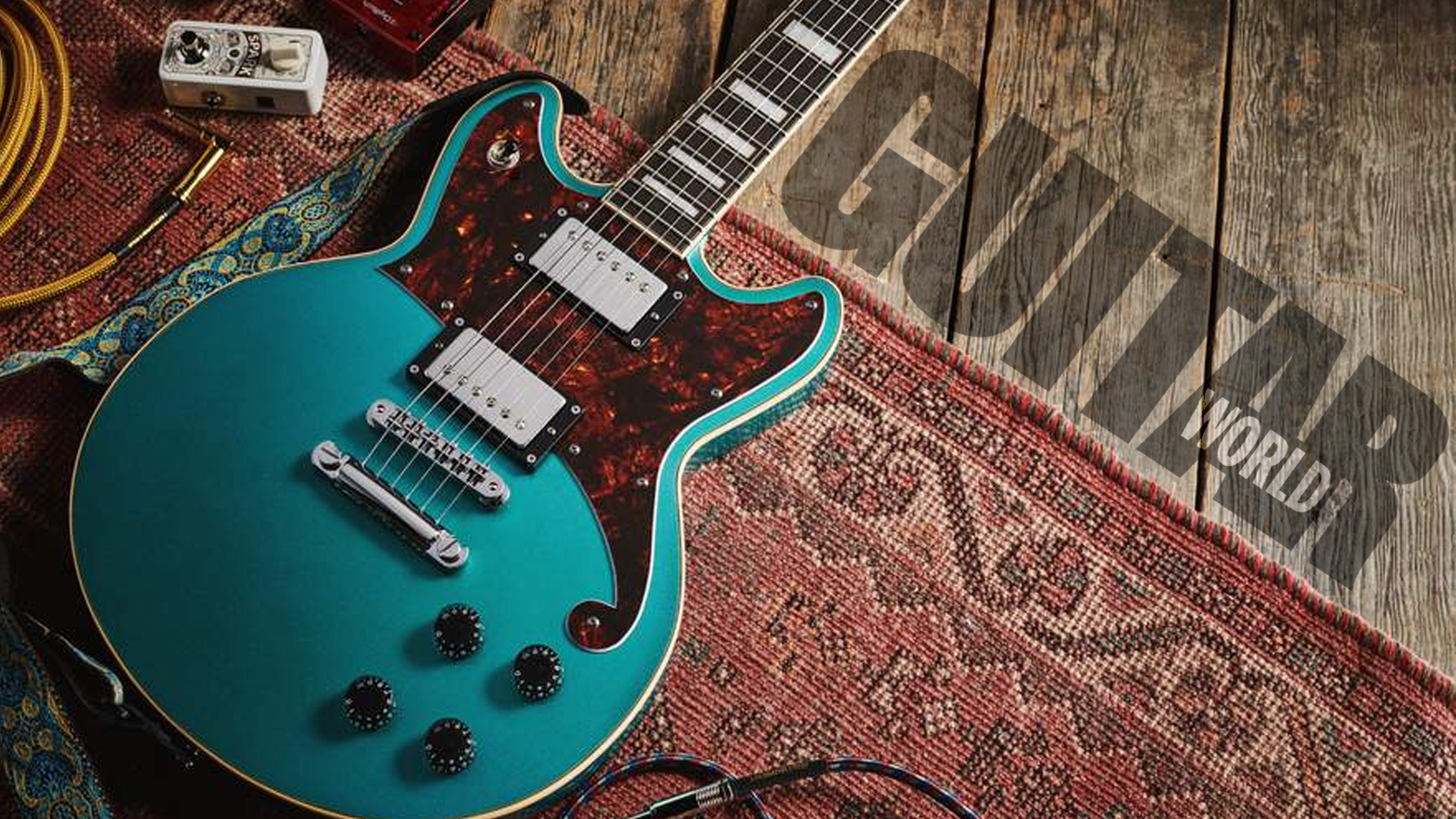
☑️ A global audience of 3.8 million guitarists monthly
☑️ Over 40,000 reviews on GuitarWorld.com
☑️ 30+ years of product testing at Guitar World
Guitar World boasts over 44 years of expertise and stands as the ultimate authority on all things related to guitars. The magazine and website feature expertly written gear round-ups and top-quality, authoritative reviews penned by a team of highly experienced industry professionals.
Guitar World's inaugural print issue hit the shelves in July 1980, and ever since, it has been captivating players and enthusiasts with engaging lessons, insightful interviews with the biggest guitar heroes, and priceless buying advice for newbie players.
Furthermore, GuitarWorld.com continues this legacy online and serves as the hub of the world's foremost authorities on guitar playing. The site not only hosts content from Guitar World but also showcases articles from respected publications such as Guitarist, Total Guitar, Guitar Techniques, and Bass Player. With a reach extending to 3.8 million players each month, GuitarWorld.com is a go-to destination for guitar fanatics globally.
Below you'll find more information on the expert authors of this guide.

Matt is a Junior Deals Writer here at Guitar World. He regularly tests and reviews music gear with a focus on guitars, amps, pedals, modelers, and pretty much anything else guitar-related. Responsible for over 60 buying guides, a large part of his role is helping guitarists find the best deals on gear. Matt worked in music retail for 5 years at Dawsons Music and Northwest Guitars and has written for various music sites including MusicRadar, Guitar Player, Guitar.com, Ultimate Guitar, and Thomann’s t.blog.
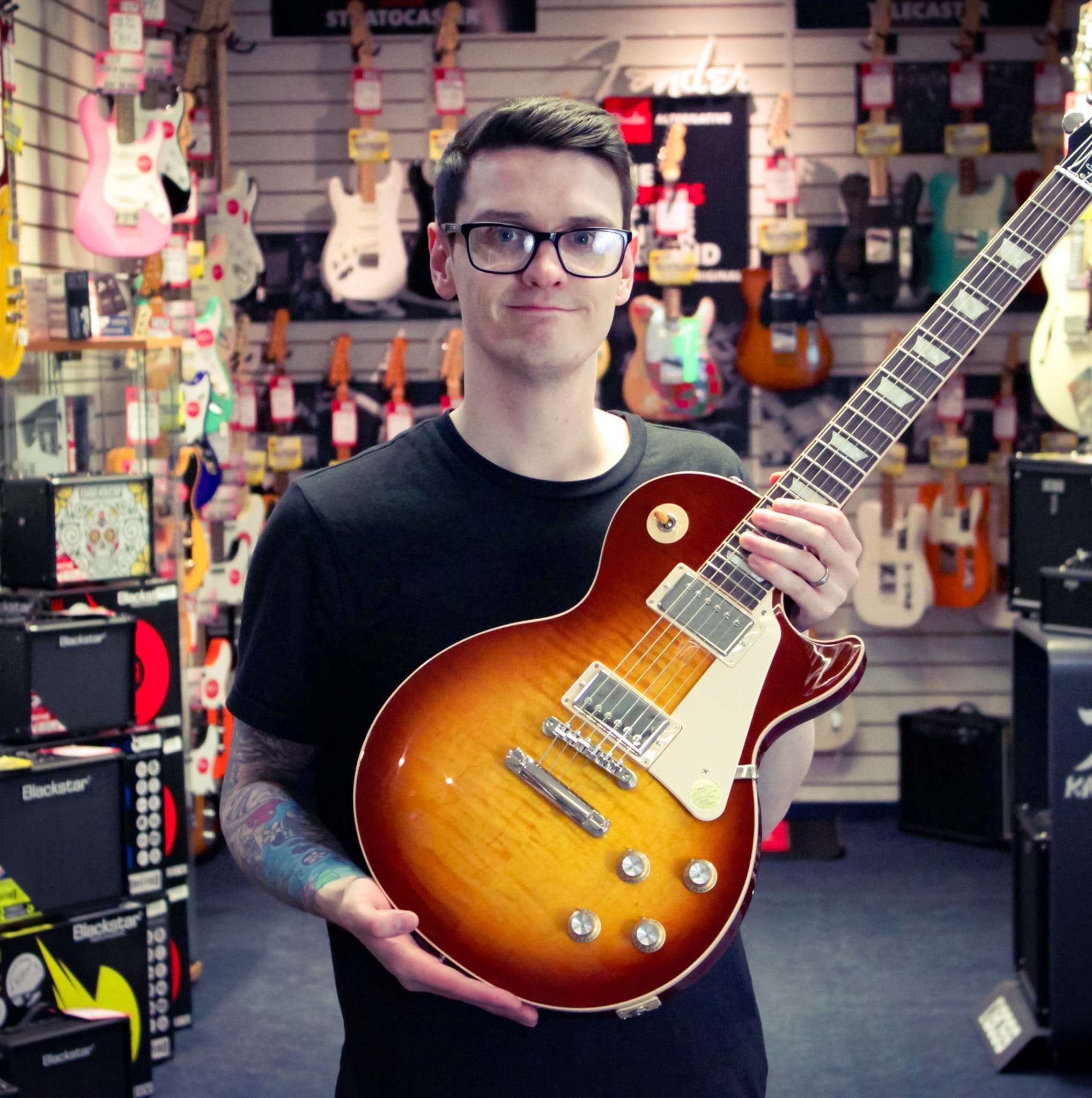
Daryl is a Senior Deals Writer at Guitar World, where he creates and maintains our 200+ buyer's guides, finds the best deals on guitar products, and tests the latest gear. His reviews have been featured in prominent publications like Total Guitar, Future Music magazine, and MusicRadar.com.
During his career, he has been lucky enough to talk to many of his musical heroes, having interviewed Slash and members of The Offspring, Foo Fighters, Sum 41, Thrice, and more. In a past life, Daryl worked in music retail. For a little under a decade, he advised everyone from absolute beginners to seasoned pros on the right gear for their needs.

Paul Riario has been the tech/gear editor and online video presence for Guitar World for over 25 years. Paul is one of the few gear editors who has actually played and owned nearly all the original gear that most guitarists wax poetically about, and has survived this long by knowing every useless musical tidbit of classic rock, new wave, hair metal, grunge, and alternative genres. When Paul is not riding his road bike at any given moment, he remains a working musician, playing in two bands called SuperTrans Am and Radio Nashville.

Alex Lynham is a gear obsessive who's been collecting and building modern and vintage equipment since he got his first Saturday job. Besides reviewing countless pedals for Total Guitar, he's written guides on how to build your first pedal, how to build a tube amp from a kit, and briefly went viral when he released a glitch delay pedal, the Atom Smasher.

After spending a decade in music retail, I’m now a freelance writer for Guitar World, MusicRadar, Guitar Player and Reverb, specialising in electric and acoustic guitars, bass, and almost anything else you can make a tune with. When my head’s not buried in the best of modern and vintage gear, I run a small company helping musicians with songwriting, production and performance, and I play bass in an alt-rock band.

Trevor Curwen has played guitar for several decades – he's also mimed it on the UK's Top of the Pops. Much of his working life, though, has been spent behind the mixing desk, during which time he has built up a solid collection of the guitars, amps and pedals needed to cover just about any studio session. He writes pedal reviews for Guitarist and has contributed to Total Guitar, MusicRadar and Future Music among others.
How we test
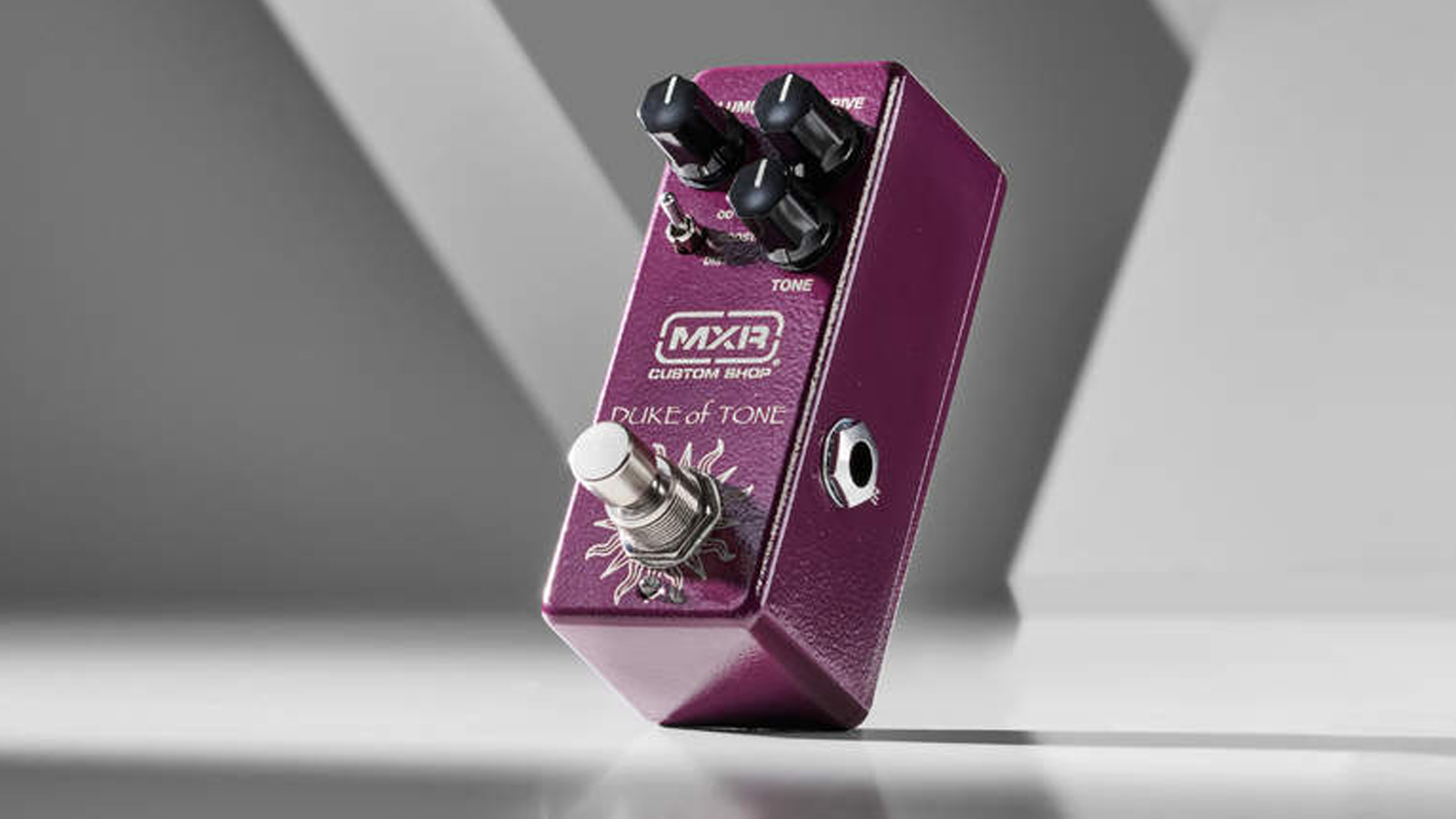
When testing an overdrive pedal we always aim to follow the same process to ensure parity. By putting the pedals we test through this process it’s easier to make comparisons, which also gives every pedal a fair shot. The Guitar World team has tested countless overdrive pedals over many years, which gives us an excellent overview of what’s good, what’s great, and what’s not so hot.
The first thing we look at is the build quality of the pedal. Stompboxes by their nature are going to get stomped on, so we need to test that they’re capable of putting up with use and abuse. We want to see whether a pedal is good for just home use, or it’s a proper workhorse that can cope with touring.
The next thing we look at is the usability of the pedal. By their nature overdrive pedals are simple, but we’ll still test the full range of every knob to see how easy it is to dial in tones. We’ll check any additional features the pedal might have like different mode switches or internal trim pots too, ensuring we get a great overview of what the pedal is capable of before we move onto the next element.
Sound, is the most important, and yet the most subjective aspect of our review. To help negate the subjectivity we aim to test an overdrive pedal with as many combinations of amp and pickups as possible, to allow us to get a clear view of its capabilities. We’ll try it in combination with different stompboxes from our collection, and put it through its paces at home, in recording scenarios, and playing with a band in order to get a good view of its capabilities.
Read more about our rating system, how we choose the gear we feature, and exactly how we test each product.
All the latest guitar news, interviews, lessons, reviews, deals and more, direct to your inbox!

Matt is a Junior Deals Writer here at Guitar World. He regularly tests and reviews music gear with a focus on guitars, amps, pedals, modelers, and pretty much anything else guitar-related. Matt worked in music retail for 5 years at Dawsons Music and Northwest Guitars and has written for various music sites including MusicRadar, Guitar Player, Guitar.com, Ultimate Guitar, and Thomann’s t.blog. A regularly gigging guitarist with over 20 years of experience playing live and writing and recording in bands, he's performed everything from jazz to djent, gigging all over the country in more dingy venues than you can shake a drop-tuned guitar at.
- Alex Lynham
- Richard Blenkinsop
- Daryl RobertsonSenior Deals Writer
